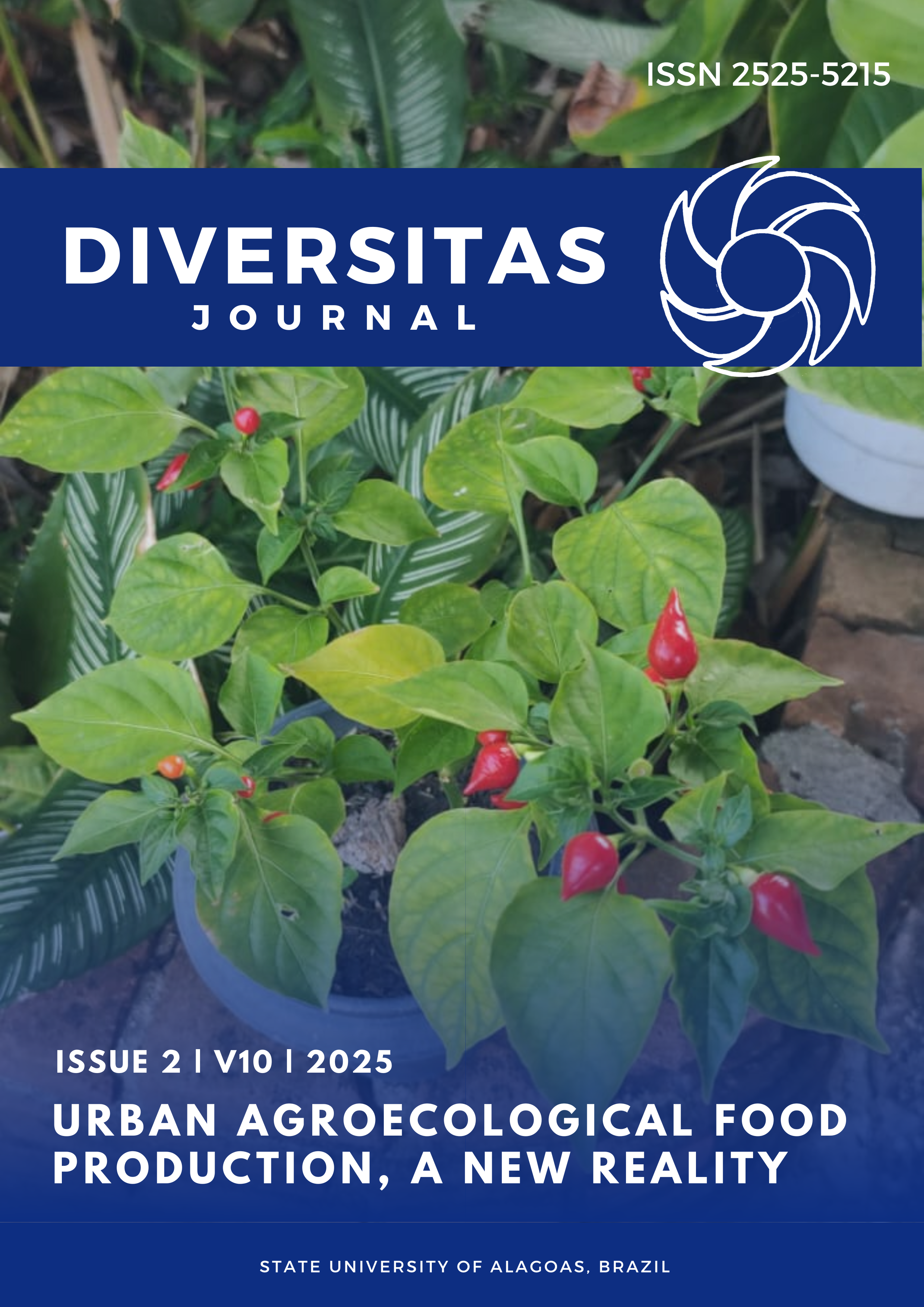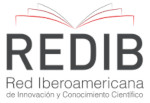The Role of Rhizophagy in Nutrient Uptake and Agricultural Sustainability
DOI:
https://doi.org/10.48017/dj.v10i2.3242Keywords:
Rizofagia, Plant Nutrition, Sustainability, AgricultureAbstract
Rhizophagy is a biological process in which microorganisms are temporarily internalized by plant roots, facilitating the absorption of essential nutrients. This study aims to explore the mechanisms of rhizophagy and its potential to promote more sustainable agriculture. The methodology was based on a systematic review of scientific literature, examining articles addressing plant-microorganism interactions and their impacts on plant nutrition. The results show that rhizophagy significantly enhances the uptake of nutrients such as nitrogen, phosphorus, and other essential minerals, while reducing dependence on chemical fertilizers. This interaction promotes more efficient use of natural resources and contributes to sustainable agricultural practices. Moreover, integrating rhizophagy into agricultural systems can increase plants’ resilience to environmental stresses such as drought and salinity while improving soil fertility and supporting microbial biodiversity. These benefits are relevant for addressing challenges related to food security and environmental conservation. In summary, rhizophagy offers a promising pathway toward more ecological and efficient agricultural practices, aligning with global sustainable development goals. Future studies are recommended to explore practical applications of this phenomenon in different cropping systems, aiming at innovation and sustainability in agricultural production.
Metrics
References
Alexander, M. (1977). Introduction to soil microbiology. Second Edition. New York, John Wiley, 472 p.
Araújo, M. J. C. (2019) Corós (Coleóptera: Melolonthidae) associados a diferentes usos do solo na região de transição Cerrado-Floresta Amazônica. 54f. 2021. Dissertação (Mestrado em Agronomia), Universidade Federal de Mato grosso, Instituto de Ciências Agrárias e Ambientais, Programa de Pós Graduação em Agronomia. https://ri.ufmt.br/bitstream/1/4301/1/DISS_2019_Marcio%20Jose%20da%20Costa%20Araujo.pdf
Barea, J. M. et al. (2005). Microbial co-operation in the rhizosphere. Journal of Experimental Botany, 56(417), 1761–1778. https://doi.org/10.1093/jxb/eri197
Cardoso, E. J. B. N.; Andreote, F. D. (2016). Microbiologia do Solo. 2d. Piracicaba: ESALQ, 221p. https://doi.org/10.11606/9788586481567
Chiaranunt, P. et al. (2015). Rethinking the paradigm: How comparative studies on fatty acid oxidation inform our understanding of T cell metabolism. Mol. Immunol. 68, 564–574. https://doi.org/10.1016/j.molimm.2015.07.023
Chiaranunt, P. et al. (2020). Hungry plants: rhizophagy as a model for P and Zn uptake in rice. Poster given at Ecological Society of America conference, Research Gate. https://doi.org/10.13140/RG.2.2.30045.23522
Dantas, J. S. et al. (2009). Interações entre grupos de microorganismos com a rizosfera. Pesquisa Aplicada & Agrotecnologia, 2(2).
Eyre, A. W. et al. (2019). Identification and Characterization of the Core Rice Seed Microbiome. Phytobiomes Journal, 3(2), 148-157. https://doi.org/10.1094/PBIOMES-01-19-0009-R
Freitas, S. S. (2007). Rizobactérias promotoras do crescimento de plantas. 2007. In: Silveira A.P.D. & Freitas S.S. Microbiologia do Solo e Ambiental. Campinas: Instituto Agronômico, 312 p.
Fasusi, O. A. et al. (2023). Harnessing of plant growth-promoting rhizobacteria and arbuscular mycorrhizal fungi in agroecosystem sustainability. CABI Agric Biosci, 4(26). https://doi.org/10.1186/s43170-023-00168-0
Gomes, E. A. et al. (2016). Microrganismos promotores do crescimento de plantas. Sete Lagoas: Embrapa Milho e Sorgo, 51 p.
Hartmann, A. et al. (2008). Lorenz Hiltner, a pioneer in rhizosphere microbial ecology and soil bacteriology research. Plant Soil, 312, 4-17.
Jacob, R. et al. (2017). The Role of Soil Microorganisms in Plant Mineral Nutrition—Current Knowledge and Future Directions. Frontiers in Plant Science, 8. https://doi.org/10.3389/fpls.2017.01617
Oteino, N. et al. (2015). Plant growth promotion induced by phosphate solubilizing endophytic Pseudomonas isolates. Front. Microbiol., 6(745). https://doi.org/10.3389/fmicb.2015.00745
Paungfoo-Lonhienne, C. et al. (2010). Turning the table: Plants consume microbes as a source of nutrients. PLoS ONE, 5(7), e11915. https://doi.org/10.1371/journal.pone.0011915
Romagnoli, E. M, Andreote F.D. (2016). Rizosfera. In: Cardoso E.J.B.N. & Andreote F.D. Microrbiologia do Solo. Segunda Edição. São Paulo, ESALQ/USP, 2016. 221 p.
Santos, J. B. (2013). Inseticidas em tratamento de sementes visando o controle de corós rizófagos (coleoptera, melolonthidae) na cultura da soja no estado de Goiás e Distrito Federal. 2013, 45 f. Dissertação (Mestrado em Agronomia), Universidade Federal de Goiás, Programa de Pós-graduação em Agronomia (EAEA).
Sender, R, et al. (2016). Revised Estimates for the Number of Human and Bacteria Cells in the Body. PLoS Biol. 14(8), e1002533. https://doi.org/10.1371/journal.pbio.1002533
Smith, S. E.; Read, D. J. (2020). Ectomycorrhizal fungi and their role in drought resistance of pines. New Phytologist, 227(1), 53-61. https://doi.org/10.1111/nph.16574
Smith, S. E. et al. (2021). The rhizosphere and hyphosphere in sustainable agriculture. Advances in Agronomy, 165, 1-44).
Thomashow, L. S. et al. (2019). Root-associated microbes in sustainable agriculture: models, metabolites and mechanisms. Pest Manag Sci., 75(9), 2360-2367. https://doi.org/10.1002/ps.5406
Verma, S. K. et al. (2017). Seed-vectored endophytic bacteria modulate development of rice seedlings. Journal of Applied Microbiology. 122(6), 1680-1691. https://doi.org/10.1111/jam.13463
Verma, P. et al. (2020). “Linkages of microbial plant growth promoters toward profitable farming,” in Phytobiomes: Current Insights and Future Vistas, eds M. K. Solanki, P. L. Kashyap, and B. Kumari (Singapore: Springer), 163–190.
White, H. J. et al. (2020). Methods and approaches to advance soil macroecology. Global Ecology & Biogeography, 29(10), 1674–90.
White, R. A. III. et al. (2019). The complete genome and physiological analysis of the eurythermal Firmicute Exiguobacterium chiriqhucha strain RW2 isolated from a freshwater microbialite, widely adaptable to broad thermal, pH, and salinity ranges. Front. Microbiol. 9(3189). https://doi.org/10.3389/fmicb.2018.03189
White, J. F. et al. (2018). Rhizophagy Cycle: An Oxidative Process in Plants for Nutrient Extraction from Symbiotic Microbes. Microorganisms, 6(95). https://doi.org/10.3390/microorganisms6030095
White, J. F. et al. (2019). Review: Endophytic microbes and their potential applications in crop management. Pest Management Science, 75(10):2558-2565. https://doi.org/10.1002/ps.5527
Downloads
Published
How to Cite
Issue
Section
License
Copyright (c) 2025 Djair Alves da Mata, Teonis Batista da Silva, Romildo Araújo Macena, Valdeir de Souza Oliveira, Mirelly Miguel Porcino, Patrício Borges Maracajá, Aline Carla de Medeiros, Luis Karlos Pereira da Silva

This work is licensed under a Creative Commons Attribution 4.0 International License.
The Diversitas Journal expresses that the articles are the sole responsibility of the Authors, who are familiar with Brazilian and international legislation.
Articles are peer-reviewed and care should be taken to warn of the possible incidence of plagiarism. However, plagiarism is an indisputable action by the authors.
The violation of copyright is a crime, provided for in article 184 of the Brazilian Penal Code: “Art. 184 Violating copyright and related rights: Penalty - detention, from 3 (three) months to 1 (one) year, or fine. § 1 If the violation consists of total or partial reproduction, for the purpose of direct or indirect profit, by any means or process, of intellectual work, interpretation, performance or phonogram, without the express authorization of the author, the performer, the producer , as the case may be, or whoever represents them: Penalty - imprisonment, from 2 (two) to 4 (four) years, and a fine. ”


















